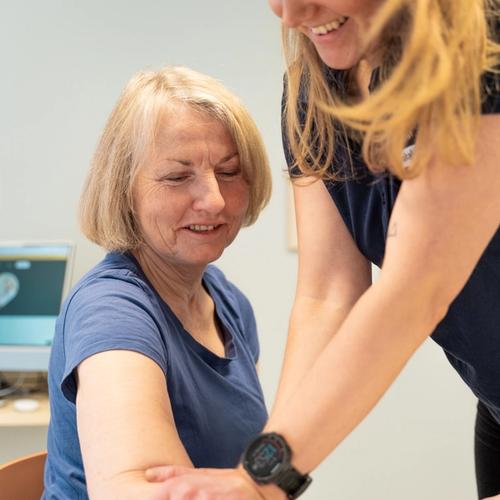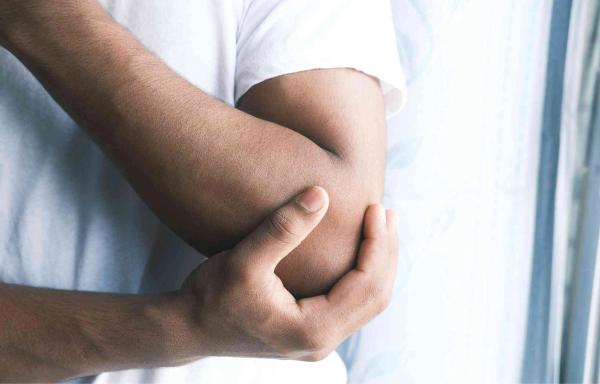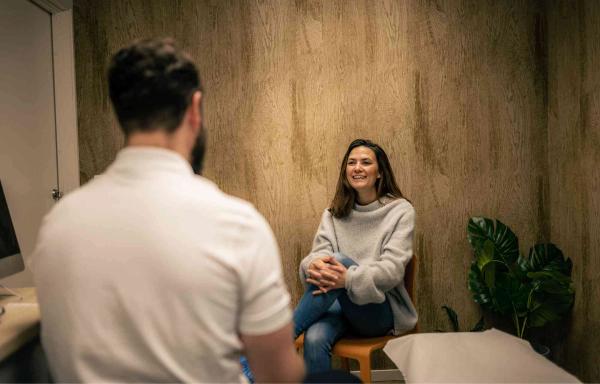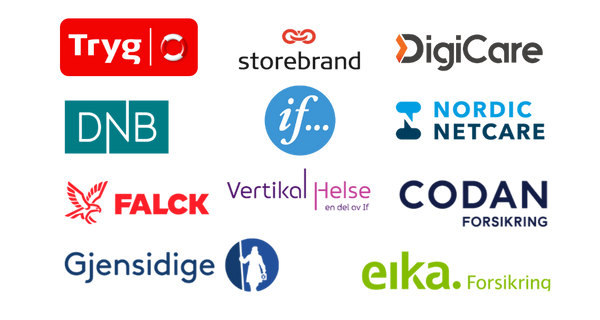Golfer's elbow
Golfer's elbow is an overuse condition affecting the tendons on the inside of the elbow/forearm. Despite its name, golf is only responsible for causing the condition in a few cases, and it is more common for the pain to occur after unfamiliar activities or significant changes in the level or intensity of activity. Some typical examples include pain that arises after renovation work, exercise activities, heavy lifting, or other everyday activities.
At Dr. Dropin, we have skilled practitioners who can assess your elbow pain and help you receive the appropriate treatment.
See availability
What are you looking for?
Symptoms of golfer's elbow
The following symptoms may indicate that you have developed golfer's elbow:
- Pain on the inside of the elbow or forearm
- Pain when gripping objects, lifting, pulling, or pushing
- Stiffness and pain when you start using your arm, and sometimes after the activity
- Tenderness around the bony bump on the inside of the elbow
Golfer's elbow is a condition that can develop gradually, and the symptoms can vary in intensity. It is important to seek professional guidance for an accurate diagnosis and treatment if you experience these symptoms.
See availability
Treatment and prognosis
The treatment of golfer's elbow often involves various approaches to achieve specific treatment goals. Here are some common treatment methods.
- Pain relief: Through manual techniques such as joint adjustments, massage, and trigger point therapy, elbow pain can be reduced.
- Increased flexibility: Specific stretching exercises and techniques can help improve the mobility of the shoulder, elbow, and forearm.
- Strength training: Gradually incorporating strength exercises for the muscles in the elbow and wrist can help strengthen the tendons and reduce discomfort.
- Ergonomic adjustments: Adjustments in work posture and technique can help reduce unnecessary strain on the tendons.
- Functional rehabilitation: Gradually resume exercise and other daily activities, with a focus on restoring optimal function in the arm.
It's important to understand that the treatment for golfer's elbow should be tailored to individual needs and may vary from person to person. A thorough evaluation and close collaboration with an experienced physiotherapist or chiropractor are crucial for developing an effective treatment plan.
When should you book an appointment?
If you recognize the symptoms above and are experiencing any of the following issues, we recommend seeking professional guidance:
- Pain or reduced mobility that has persisted for more than a week without improvement.
- Severe symptoms that you need assistance in reducing quickly.
- Symptoms that cause you concern or that you believe may be due to more serious conditions.
Remember that early assistance from a therapist can reduce the duration of your issues and contribute to achieving the best possible outcome. You should never worry that your problems are "too small" - we take all types of issues seriously.
See availability
Do you want guidance to find out which treatment suits you best?

Telephone
Authorized healthcare personnel assist you over the phone. We answer the phone within 60 seconds. Free of charge.

Find therapist
Find a therapist that suits you and your needs by filtering on one or more criteria.
Use your health insurance
We cooperate with all the major insurance companies, so that you can use your health insurance with us if you have elbow pain or other problems.
Read more about how to use your health insurance here
What can you do by yourself?
Although treatment for golfer's elbow typically involves professional guidance and therapy, there are several measures you can take to alleviate symptoms and improve your condition:
- Follow recommended exercises: If you have been prescribed home exercises by your therapist, it's important to perform them regularly.
- Continue to be active: Do not completely stop excercising or working. As long as you can stay active without big increases in pain, this is usually recommended.
- Pain relief: Pain can sometimes be reduced by using an ice pack, heating pad, a warm shower, or by performing gentle movements.
- Medications: Use over-the-counter pain relievers as directed by healthcare professionals.
- Adjust activities: Avoid activities that lead to prolonged worsening of the foot pain (more than 12 hours).
- Maintain good communication with your therapist: So that the treatment plan can be adjusted to any changes you experience.
If you have not yet had the condition examined or have deviated from the treatment plan, it is recommended to contact healthcare professionals for further guidance.
See availability